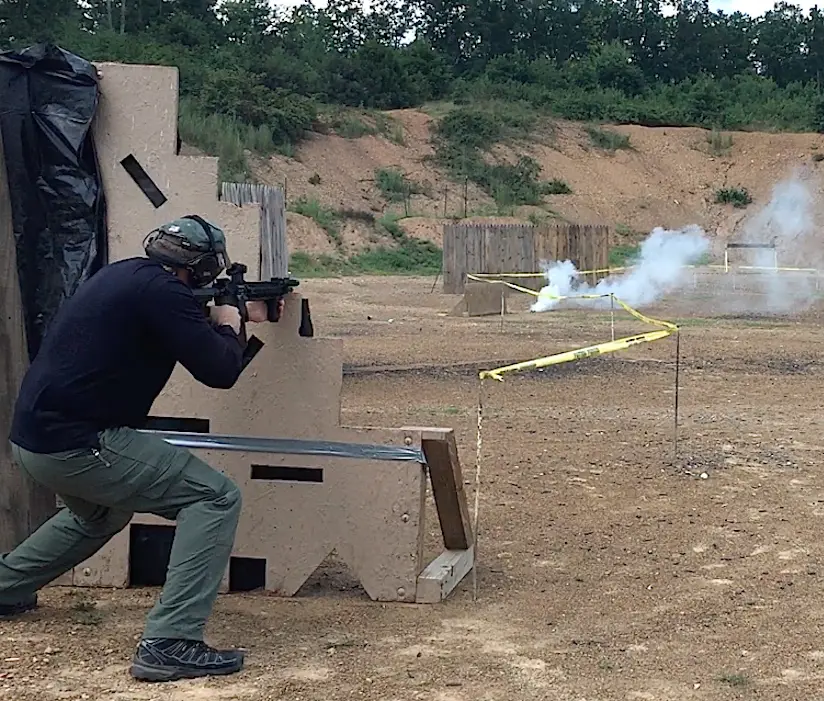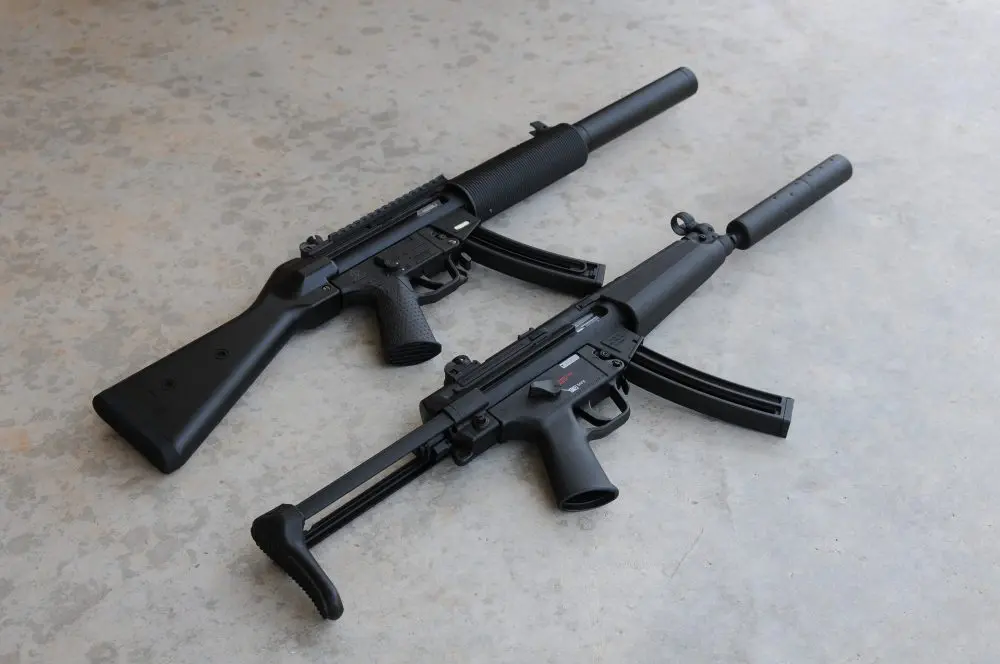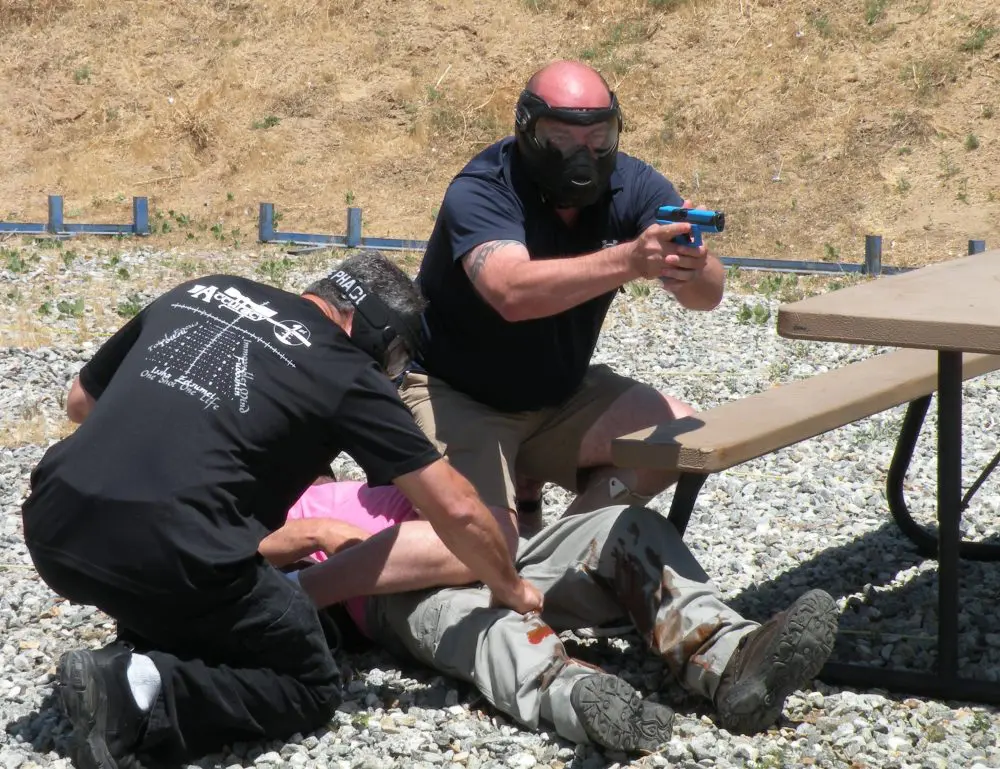Over 20 years ago, the Beretta M92F was adopted as the replacement for the venerable M1911A1. Despite some early controversy, the Beretta has met the expectations of all U.S. military forces that use it, although some special operations units continue to use customized M1911A1s.
The original 92F was essentially a modified and upgraded Model 1951 (951), whose design dates from the late 1940s. The Model 92 went into production in 1976 and was adopted by several military forces before entering U.S. service. The original 92F was replaced in production by the 92FS with the same M9 designation in 1990.
The M92FS corrected some early complaints about the pistol and has been in service unchanged ever since. The M9/92FS is one of the smoothest functioning pistols in existence, thanks in part to its dropping block locking system, which was adapted from the Walther P38. The open slide design makes for easy maintenance and clearing any stoppages that might occur. The barrel is hard chrome lined, a feature that enhances reliability and makes cleaning simpler because fouling doesn’t stick to it. Corrosion is likewise not an issue with a chrome-lined barrel. The M9’s magazine capacity of 15 rounds is more than twice that of a 1911.
The M9 has occasionally been criticized for lack of reliability, but the facts speak otherwise. In response to early criticisms, the Army conducted testing at Aberdeen Proving Ground, Maryland, with results that should silence all those who doubt the M9’s reliability. M9 frames lasted an average of 35,000 rounds. Locking blocks went for an average of 22,000 rounds, while slide life averaged 75,000 rounds. This is essentially a lifetime of shooting.
As to malfunctions, documented tests of M9 pistols revealed that using milspec ammunition, the M9 averaged only a single stoppage in 17,500 rounds.
All in all, the only controversy regarding the current iteration of the M9 is magazine reliability, which is no fault of the pistol but of the U.S. Army, which insists on buying magazines from a source whose products are widely acknowledged to be inferior to the factory magazine. A word to the wise: If you are getting ready to deploy to the Sandbox and expect to be issued an M9 or M9A1, get some factory mags or those made by Mec-Gar. The same holds true for law enforcement users. Your pistol is only as reliable as your magazine!
A lesser issue has been the lethality of the M882 ball ammo used in the M9. There have been anecdotal complaints of the M882 round being a poor “people stopper” and, whether or not these reports are true, the military has developed a new type of ball ammunition in conjunction with Federal Ammunition that has improved lethality over the standard M882. We’ll look into this new military round in more detail below.
While the M9 has been satisfactory in every way as far as the U.S. military is concerned, our nation is engaged in a different kind of war that mandates close quarters battle (CQB), building clearing and 24/7 operations. Also, there are literally dozens of high-intensity white lights and lasers designed to mount onto a MIL-STD-1913 rail, which is now featured on many handguns for law enforcement use.
The U.S. Marine Corps was first to get the rail dust cover when it requested Beretta to modify the M9 and make a few upgrades, which resulted in the M9A1. Most obvious is the MIL-STD-1913 rail on the dust cover, but there are some other subtler changes as well.
The front and back straps are checkered with a more aggressive pattern to enhance handling and control even further over earlier pistols. The newer pattern facilitates positive control even with wet or gloved hands, thereby enhancing accuracy as well. As mentioned, the upgrades were few but significant, and serve to bring the M9 series into 21st century military and law enforcement tactical operations. Perhaps a more accurate description of the M9A1 would be “refined,” because that in essence is what it is in comparison to the original, which will continue in production at Beretta USA’s Accokeek, Maryland factory.
The addition of a MIL-STD-1913 rail on the M9’s dust cover literally transforms the pistol, and I believe that every existing M9 should be replaced with an M9A1. Why? I previously mentioned that current military ops are 24/7 and in places where illumination is mandatory. Law enforcement work has always been characterized by this fact, and having to carry a pistol in one hand and an illumination device in the other can cause problems. Most military and law enforcement officers train to use both hands to hold their pistol. Having to use the weak hand for a light causes them to be placed in an unfamiliar position.
There are techniques for using a light and pistol separately, and the argument can be made that this is a training issue, but the fact remains that such techniques are a compromise. On police duty, I carry a pistol that has a MIL-STD-1913 rail on the dust cover and, when I respond to an alarm in a darkened building or outside after dark, my light goes right on that rail and I clear using both hands for optimum control.
I chose to add a SureFire X300 whose LED generates 110 lumens of brilliant white light focused to produce a tight beam with a central “hot spot” and significant surround light for peripheral vision. The LED has no filament to burn out or break, and generates enough dazzling light to overwhelm a bad guy’s night-adapted vision. The X300 runs for 2.4 hours per set of batteries.
The aerospace-grade aluminum body is milspec hard anodized and O-ring and gasket sealed to make it submersible to 22 meters. The X300’s mounting system comes with adapter plates permitting rapid attachment to and removal from either Universal or MIL-STD-1913 rails. An ambidextrous push/toggle switch provides one-finger operation for either momentary or constant-on operation. Switches are also available for operating the X300 when attached to a long gun.
As previously mentioned, there is the question of improved lethality for military users. We noted that there have been complaints about the inability of military M882 ball 9x19mm ammunition to reliably stop bad guys. This is, of course, unrelated to the M9/M9A1 pistol itself, but without ammunition, a firearm is nothing but an expensive club, and the military has taken steps to increase the lethality of 9mm ammunition.
International law requires that only ammunition that is not specifically designed to be expanding be used in combat. This does not necessarily mean that bullets with hollow points for non-lethal purposes or bullets of other designs that fragment are illegal. For example, some years ago Special Forces adopted the Black Hills Mark 262 77-gr. 5.56mm round that incorporates a match bullet, and it was ruled legal because the tiny hollow point was intended to enhance external ballistics. Of course, terminal ballistics were also enhanced, but since that was not the primary purpose, the Mark 262 is legal for combat.
A similar approach was taken with the development of the new military 9mm cartridge. The new ammo, developed by Federal Ammunition, fires a bullet that is totally encased in a brass jacket, but the jacket is thin and deforms on impact to limit penetration, after which the bullet literally explodes, creating a much larger permanent wound cavity than standard M882 bullets. This new ammunition should afford those troops armed with any 9mm pistol improved lethality compared to standard M882 ball. Of course, law enforcement users aren’t limited as to their ammunition other than by department policies.
As mentioned, with the exception of the MIL-STD-1913 rail, the changes to the M9A1 are subtle, but the aggressive checkering on the front and rear grip straps transforms the pistol’s handling. The pistol actually feels different and is more controllable than the basic M9, thanks to the checkering. Otherwise the M9A1 is unchanged from the original.
The M9A1 isn’t a small pistol, so with its relatively large grips and the 9mm cartridge, recoil forces are spread over a wide area, minimizing felt recoil and enhancing control. Also, the pistol is one of the smoothest functioning handguns I have ever tested. Accuracy was good with all types of ammo, and the M9A1 functioned with 100 percent reliability. All in all, the changes to the M9 that have transformed it into the M9A1 are very much in keeping with those that in 1922 transformed the M1911 into the M1911A1, and they will keep the M9A1 soldiering on well into the 21st century.
SOURCES:
Beretta U.S.A. Corp.
Dept. S.W.A.T.
17601 Beretta Drive
Accokeek, MD 20607
(800) 237-3882
www.berettausa.com
Blackhawk Industries
Dept. S.W.A.T.
6160 Commander Parkway
Norfolk, VA 23502
(800) 694-5263
www.blackhawk.com
SureFire, LLC
Dept. S.W.A.T.
18300 Mount Baldy Circle
Fountain Valley, CA 92708
(800) 828-8809
www.surefire.com





